When we think of Florida, sunny beaches and swaying palm trees often come to mind. However, in this beautiful state lies a hidden danger that may not be immediately apparent. Not every part of Florida is as charming as it seems, as certain areas carry unique risks. From treacherous roads that demand heightened caution to cities with high crime rates, these locations carry potential hazards.
This article will explore the dangerous side of Florida and cover the 15 most dangerous places in the state!
1. Miami — Severe Weather
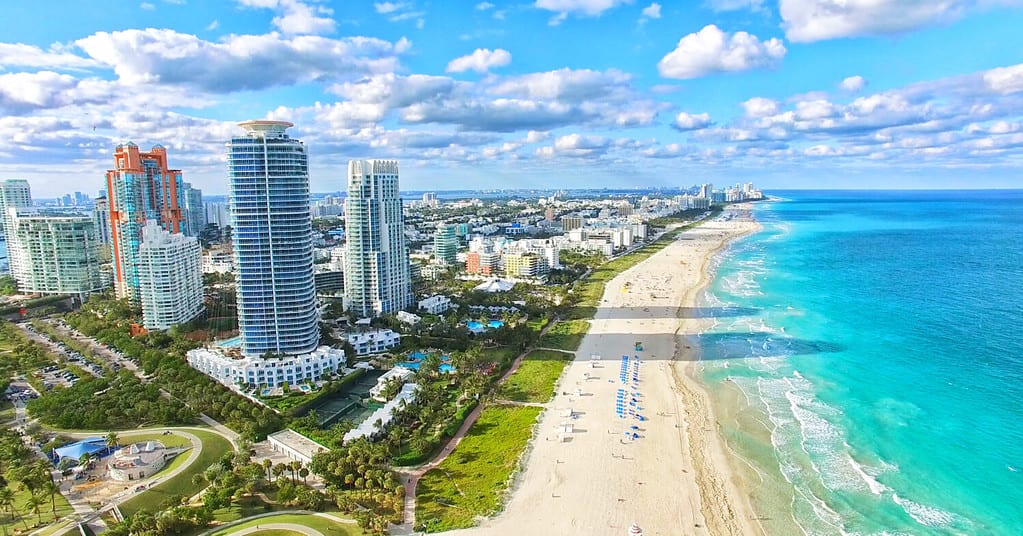
Unfortunately, Miami is one of the most dangerous places in Florida, as it is a hurricane-vulnerable zone.
©Mia2you/Shutterstock.com
Miami, renowned globally and locally as a prime holiday destination, can transform into one of Florida’s most dangerous locations during certain times of the year.
Specifically, there’s an undeniable pattern that places Miami, more often than not, in the path of potential hurricanes. Ranking high on Florida’s list of hurricane-vulnerable zones, there’s a 16% annual probability that Miami will bear the brunt of a hurricane. The city’s geographical location and elevation above sea level (42 ft) contribute to the statistical reality that a hurricane will likely occur within a 50-mile radius of Miami every 6-8 years.
Given that the majority of Miami’s population resides within 20 miles of the coast, the harsh effects of hurricanes, including property devastation, are commonly experienced firsthand. The last catastrophic storm, Hurricane Andrew, struck in 1992, leaving a trail of destruction with its Category 5, 165 mph winds. This powerful storm is etched in memory as the third most powerful hurricane to make landfall in United States history.
In financial terms, Hurricane Andrew’s aftermath equaled a staggering $26.5 billion. Yes, billion! The high-speed winds and destructive storm surges were the primary drivers of the immense damage caused.
2. Key West — Severe Weather

Key West has a 16% likelihood of experiencing a hurricane each year.
©Mia2you/Shutterstock.com
Another dangerous place in Florida due to severe weather is Key West! Like Miami, Key West has a yearly 16% likelihood of experiencing a hurricane’s effects. Its residents usually find themselves facing the fury of a hurricane every six years. This is all because of Key West’s geographic positioning at the southernmost point of the Florida Keys.
The Atlantic Ocean to the east and south and the Gulf of Mexico to the west and north, Key West, is open to hurricane threats from all directions. While it is not as elevated as Miami — resting only 18 feet above sea level compared to Miami’s 42 feet — this makes it all the more susceptible to flooding and the effects of storm surges.
The two notable hurricanes in recent history are the 2005 Hurricane Wilma and the 2017 Hurricane Irma. While Key West got away with minor damage with Hurricane Irma, Wilma caused around $100 million in damage.
Key West’s isolation as an island can make evacuations more challenging compared to other regions, arguably raising the risk for residents during a hurricane.
3. Melbourne — Severe Weather
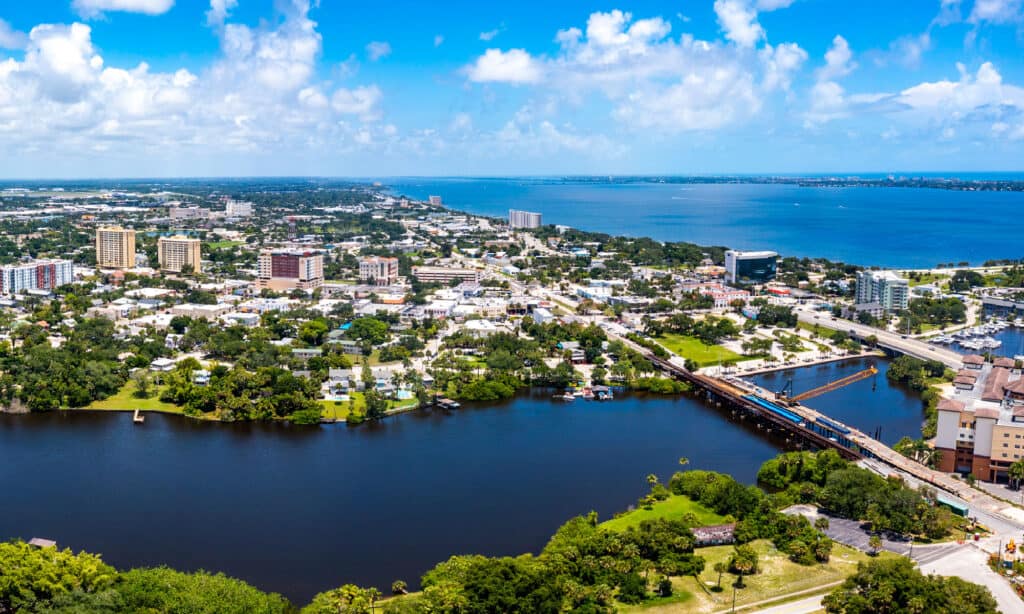
Melbourne is also a dangerous place in Florida due to hurricanes.
©iStock.com/Stephen Wood
Situated in Brevard County, Melbourne is counted among Florida’s best places to reside, though it isn’t without its risks during certain times of the year. Northward from Miami, the probability of hurricanes may decrease, but that doesn’t mean those living there won’t feel the effect of passing by hurricanes.
This became all too clear in 2004 when Hurricane Frances made a forceful landfall as a Category 2 storm. With the progression of climate change leading to more frequent and powerful hurricanes, Melbourne will likely deal with severe weather more often in the coming years.
The Central Florida Atlantic Coast has a known vulnerability to major hurricanes, but most of them lose strength before reaching places like Melbourne. Despite a lower probability of experiencing a major hit, Melbourne’s geographic positioning still leaves it exposed to potential storm surges and high winds.
4. Tampa — Severe Weather
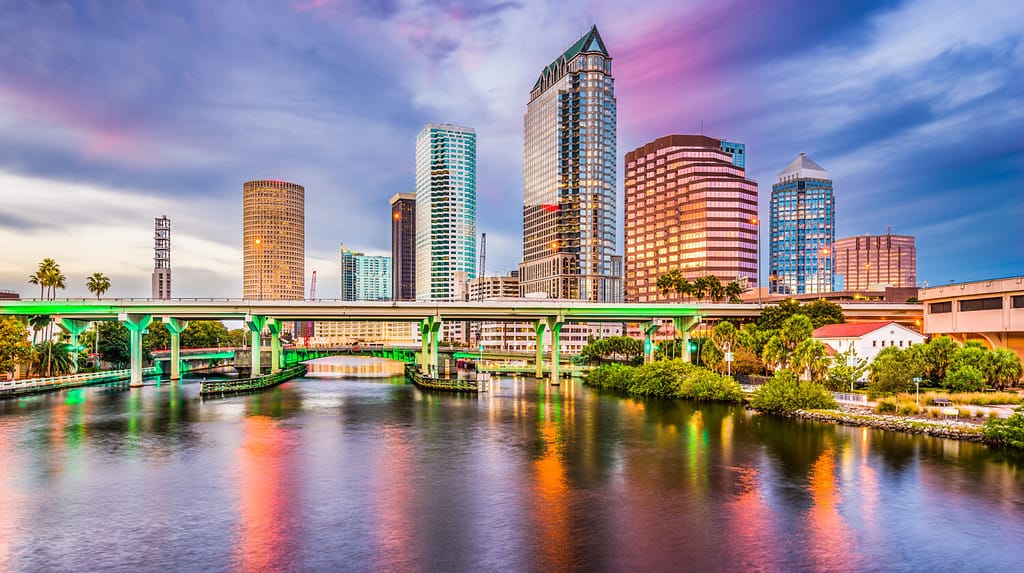
Tampa has an 11% likelihood of experiencing a hurricane each year.
©Sean Pavone/Shutterstock.com
The western flank of Florida, including the city of Tampa, is no stranger to severe weather, including hurricanes.
The Tampa-St. Petersburg region faces an 11 percent annual likelihood of experiencing the impact of a hurricane. Located on a peninsula, Tampa is bordered by Tampa Bay and the Gulf of Mexico, exposing it to hurricanes from a few different directions. With many of its almost 400,000 inhabitants living along the coastline, the threat of a storm surge is a significant concern. A storm surge occurs when hurricane winds push water toward the shore, leading to coastal flooding.
Tampa, much like Miami, is a sprawling urban area, meaning a hurricane’s effects would be felt throughout the city. Due to its proximity to the relatively shallow Tampa Bay, water can accumulate and surge into the city, causing substantial coastal damage.
Although Tampa hasn’t suffered a direct hit since 1921, 68 tropical storms have come within 60 miles of the city. Even in recent history, hurricanes have left their mark. In 2004, Hurricane Charley — a Category 4 storm — struck south of Tampa, resulting in massive $16 billion in damages.
5. Fort Myers — Severe Weather
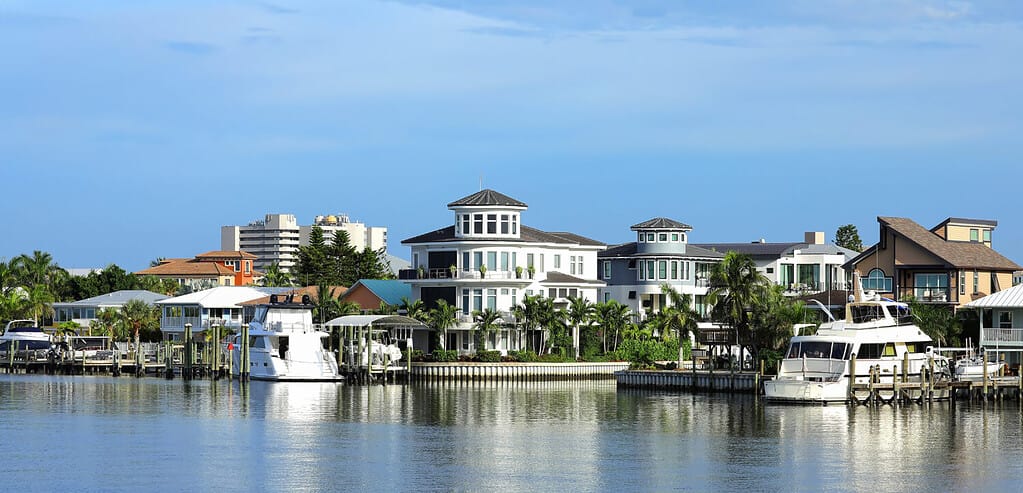
Fort Myers has also felt the effects of a hurricane in the past.
©Jillian Cain Photography/Shutterstock.com
Hurricane Charley in 2004, while impacting Tampa, also wreaked havoc in areas like Fort Myers.
Despite Southwest Florida not typically being a common target for hurricanes, the most devastating storm to ever hit Fort Myers was Hurricane Irma in 2017. This Category 4 hurricane, boasting winds of up to 150 mph and enormous storm surges, led to a staggering $64 billion in damages.
The damaging effects of the hurricane lingered for days across Florida, directly impacting Fort Myers’ inhabitants and resulting in power outages that lasted for several days post-storm. Tragically, the storm also claimed lives, underlining the danger hurricanes pose during and in their aftermath.
6. US-19 — Road Accidents
Extreme weather conditions aren’t the only hazards making certain places in Florida particularly dangerous — some roads also pose significant risks for inhabitants!
US-19, a highway stretching 262 miles along Florida’s western coast, is infamous for its treacherous conditions, notably the segment from San Marco Drive to Denton Avenue. This nearly five-mile stretch records a worryingly high accident rate, with an average of 5.7 crashes per mile.
Sadly, it bears the dubious distinction of being the deadliest road in Florida. Moreover, between 2001 and 2016, an alarming 137 pedestrians tragically lost their lives on US-19. The issue continues, as highlighted by the statistics from the Florida Department of Transportation, which reported 48 pedestrian fatalities from 2017 up until June 2022.
7. US-41 — Road Accidents
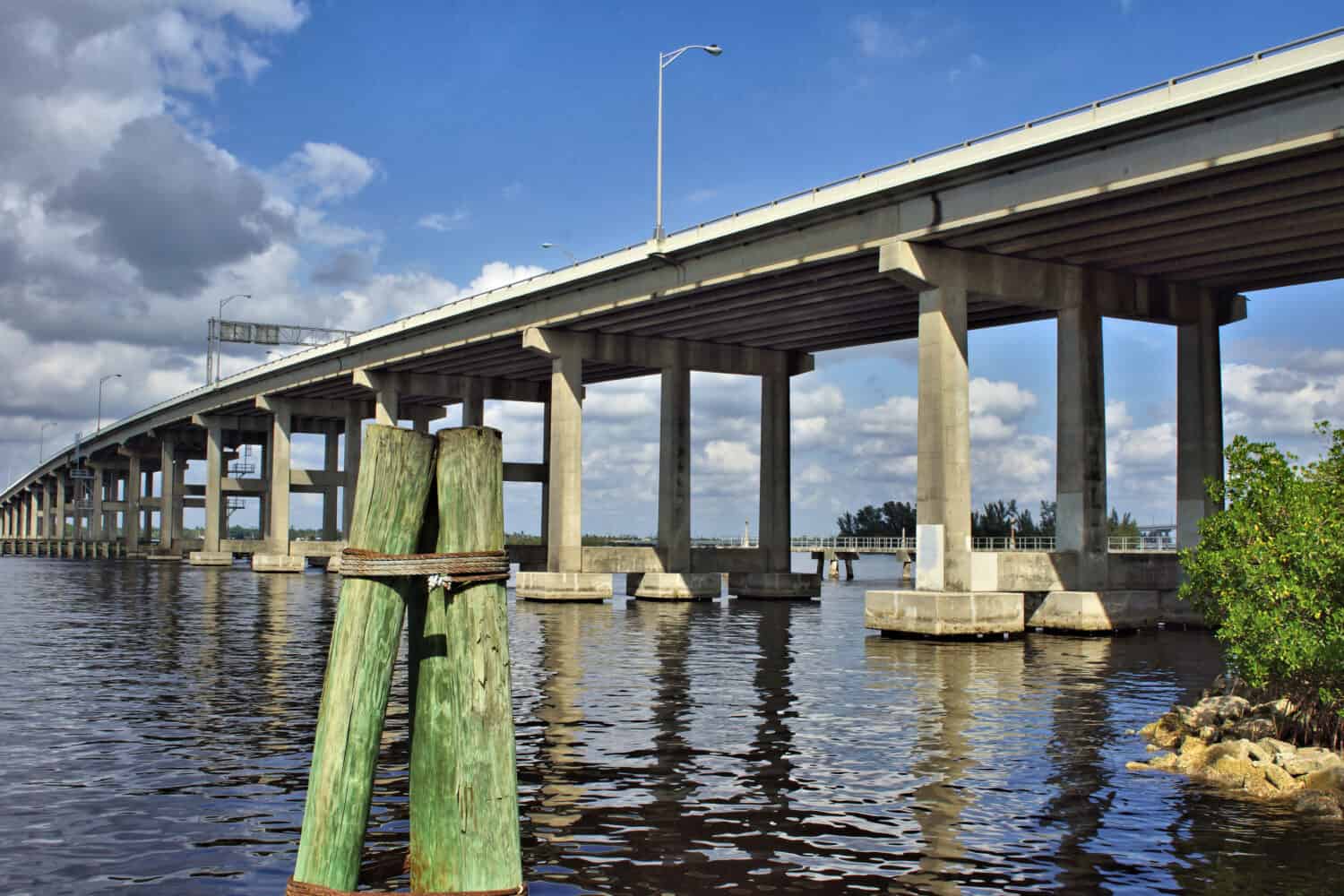
One of the most dangerous roads in Florida is US 41.
©Gary G. Beeler/Shutterstock.com
US Highway 41 (US 41) extends 479 miles from Miami in South Florida up to Georgia. This road has unfortunately earned a notorious reputation as one of the most dangerous highways in Florida.
In particular, the segment from 30th Avenue East to Pearl Avenue has been singled out as one of Florida’s most dangerous roadways. Its poor reputation is a result of several contributing factors, such as heavy vehicular traffic, a high incidence of accidents, and stretches notorious for restricted visibility.
This particular 4.4-mile section of US 41, with an accident rate of 4.3 crashes per mile, presents substantial hazards for drivers.
It is, in fact, the second most dangerous road in the entire country. This title is well-deserved, given the alarming frequency of fatal crashes — over 700 fatalities have occurred on this highway in the past decade alone.
8. I-95 — Road Accidents

Be careful when driving along Florida’s Atlantic Coast on I-95.
©Katherine Welles/Shutterstock.com
Interstate 95 (I-95), the main Interstate Highway running along Florida’s Atlantic Coast, is another road that is one of the most dangerous places in Florida.
The most dangerous section of this road is between Hypoluxo Road and Woolbright Road. This 4-mile stretch has an alarming accident rate of 4.3 crashes per mile, necessitating drivers to be extra vigilant.
Another particular stretch of I-95, spanning 3.85 miles in Miami’s Little River neighborhood, is notorious for its exceedingly high mortality rate. The National Highway Traffic Safety Administration (NHTSA) has labeled this segment as the deadliest per mile in Florida, with a recorded 27 fatalities on this part of the highway within a single year.
9. Lake City — High Crime Rate
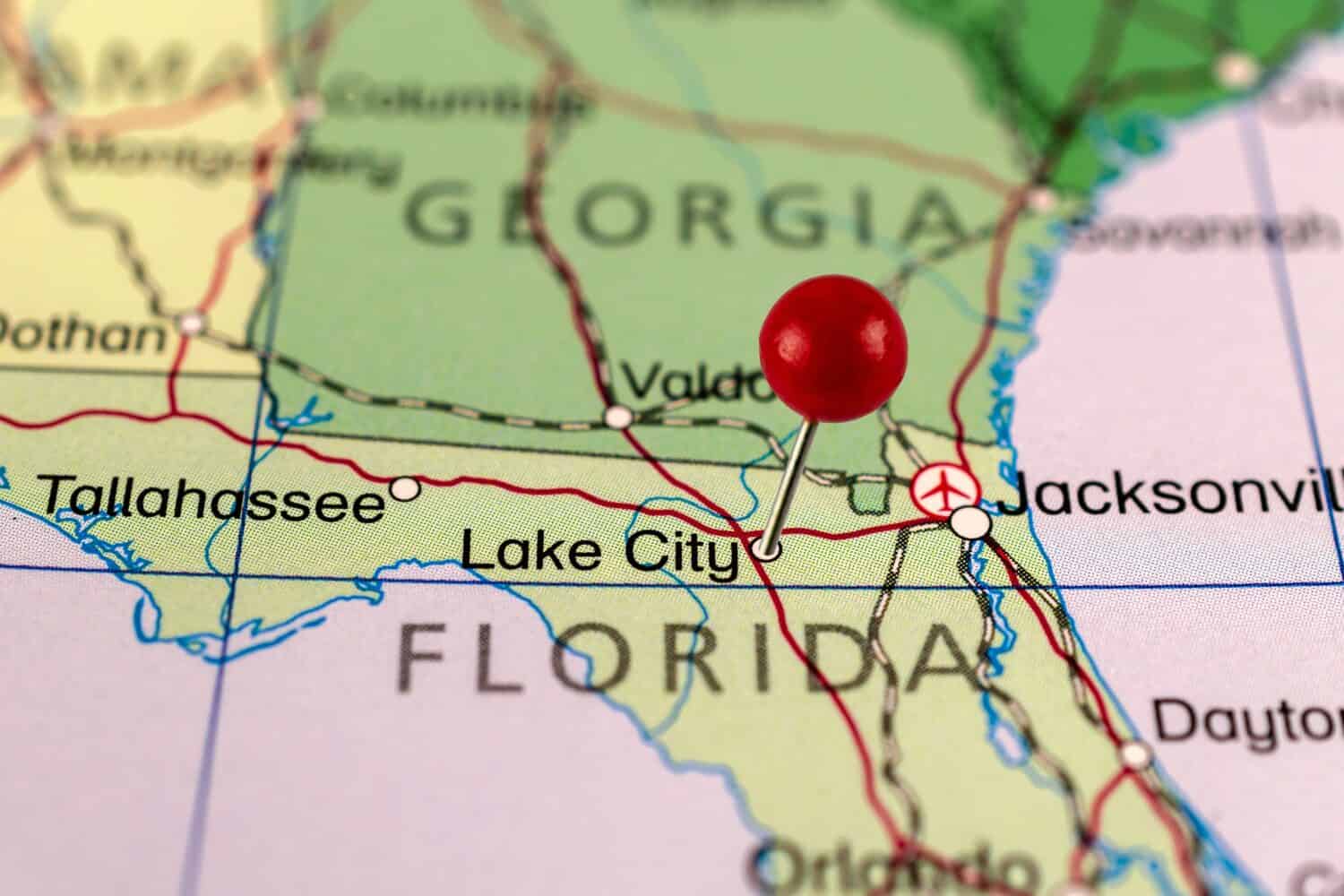
Lake City is Florida’s most dangerous city, with a staggeringly high crime rate.
©PredragLasica/Shutterstock.com
Unfortunately, Lake City has earned itself the reputation of being Florida’s most dangerous city. With a striking violent crime incidence of 1,547 per 100,000 population, it stands out not just within the state but also places prominently among the most dangerous cities nationwide.
Lake City, while smaller in size with about 12,500 inhabitants and generally cheaper living expenses compared to other Florida areas, battles with extremely high poverty and crime levels. The likelihood of a violent crime in Lake City is nearly quadruple the statewide average.
With 54.42 instances per 1,000 people, the rate of property crime is notably high. Furthermore, the area’s poverty level is significant, with 22.2% of the populace living in economic distress.
10. Riviera Beach — High Crime Rate

Singer Island is the safest area within Riviera Beach.
©Frank Biganski/Shutterstock.com
Riviera Beach records a violent crime rate that is startlingly high, with its homicide rate outpacing the national average by a factor of seven. This grim statistic places it at the top of the list for this particular crime within Florida.
Situated on the outskirts of the vibrant Miami metro area, Riviera Beach contains certain sectors that are best steered clear of if you prioritize safety. While Singer Island is deemed the most secure area within Riviera Beach, the remainder of the city has a regrettable reputation as one of Florida’s most unsafe places.
In terms of socio-economic indicators, the poverty rate in Riviera Beach stands at 20.04%, pointing to substantial economic challenges faced by its residents.
11. Cocoa — High Crime Rate
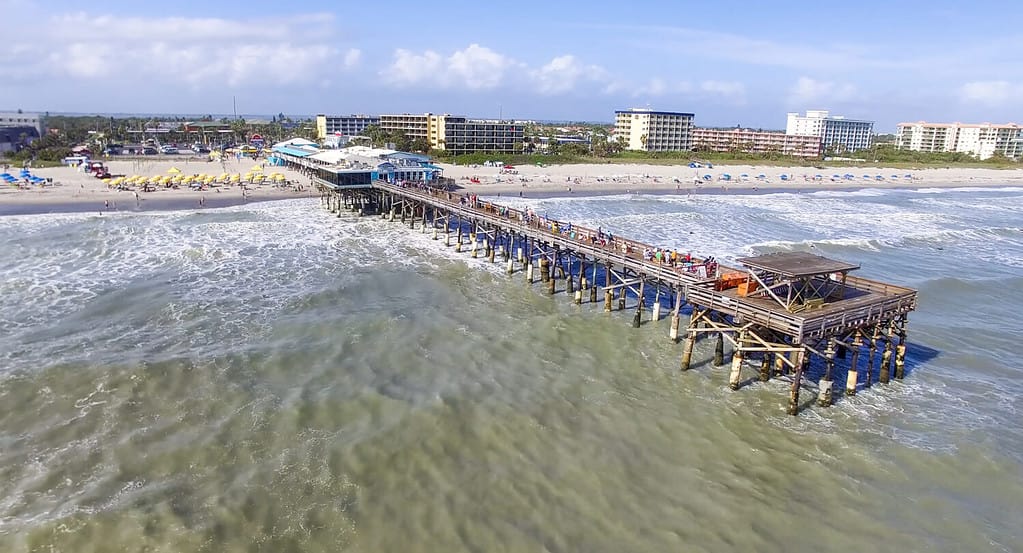
Located close to Cape Canaveral, Cocoa has a crime rate 2.8 times greater than the national average.
©Zhukova Valentyna/Shutterstock.com
Cocoa is another dangerous place in Florida due to its extremely high levels of violent crime. Despite being home to just around 19,000 people, the town has a crime rate of 1,108 per 100,000 residents. This figure is a worrying 2.8 times greater than the national average and threefold the average across the state. The most frequently occurring violent crimes in Cocoa are burglaries and assaults.
Situated close to Cape Canaveral, Cocoa might not be the best option for those seeking a serene and safe environment in the Sunshine State.
The town witnesses property crime at a rate of 57.82 incidents per 1,000 individuals. Furthermore, Cocoa faces significant economic hardship, with a poverty rate of 13%.
12. Lake Worth — High Crime Rate
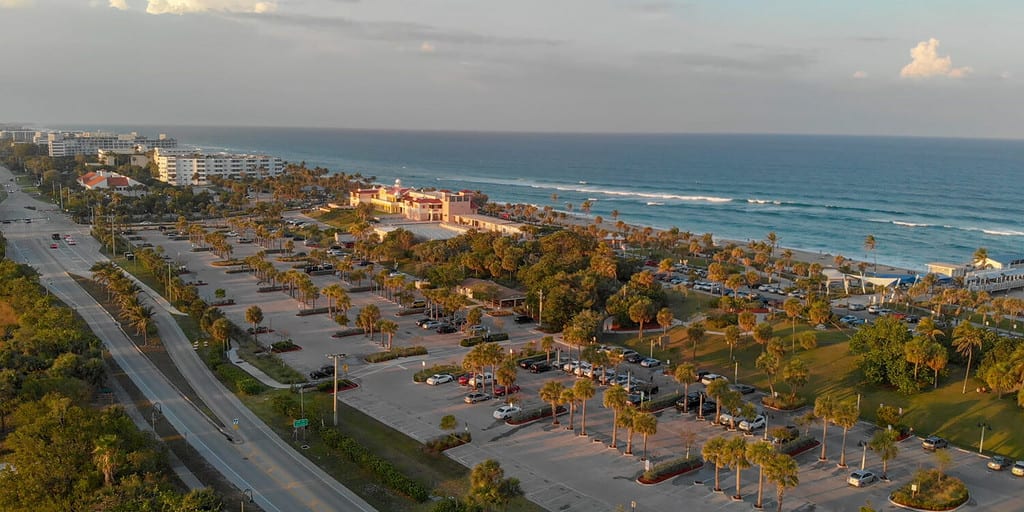
Lake Worth’s crime rate has been decreasing over the years.
©GagliardiPhotography/Shutterstock.com
A short trip south from Riviera Beach brings you to another Floridian city with a relatively high rate of violent crime: Lake Worth. Here, the figure stands at 996 for every 100,000 inhabitants, a statistic that exceeds the state and national averages by over two and a half times.
Although Lake Worth has been experiencing a steady decrease in crime rates in recent years, it still remains a dangerous place in Florida.
As for neighborhood specifics, the northern parts of Lake Worth carry a higher risk of crime, so it’s advisable to steer clear of these areas.
In terms of socio-economic indicators, the poverty rate in Riviera Beach stands at 20.04%.
13. Panama City — High Crime Rate

Unfortunately, Panama City experiences a lot of crime in certain areas.
©Zmaj88/Shutterstock.com
Panama City, nestled in Bay County, is somewhat infamous as one of the more dangerous places in Florida. It’s a paradise for outdoor enthusiasts, offering a range of activities from fishing to scuba diving and even leisurely cruises. Plus, it’s a hub for shopping and dining experiences. The cost of living, particularly housing, is comparatively reasonable, making it an appealing choice for families.
However, the city’s image is tarnished by high crime rates, encompassing horrifying incidents such as homicides, violent robberies, and abductions. In fact, the crime rate is 1.9 times higher than the U.S. average.
Furthermore, Panama City has a poverty rate of 13.5%, which is nearly double the U.S. average.
14. Lauderhill — High Crime Rate
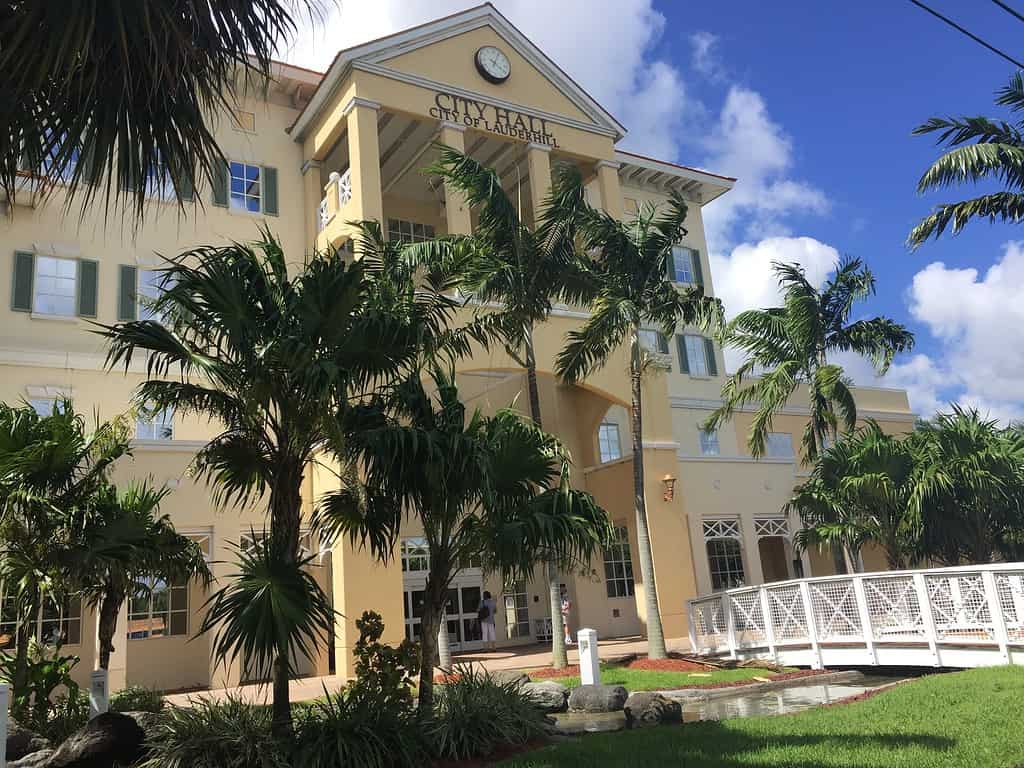
Lauderhill’s property crime rate is 24.56 incidents per 1,000.
The city of Lauderhill in Florida has unfortunately witnessed an upward trend in crime rates in recent times. In the year 2022, this city, with a population of around 72,000, logged 632 instances of violent crime. This marked a disturbing increase of over 20% compared to the figures from 2018.
The total rate of violent crime in Lauderhill stands at 878 per 100,000 inhabitants. The city’s residents face a 2.3 times higher risk of falling victim to such crimes in contrast to the average resident of Florida.
The rate of property crime is recorded at 24.56 incidents per 1,000 people. Additionally, the poverty rate in the area stands at 24.64%.
15. Homestead — High Crime Rate
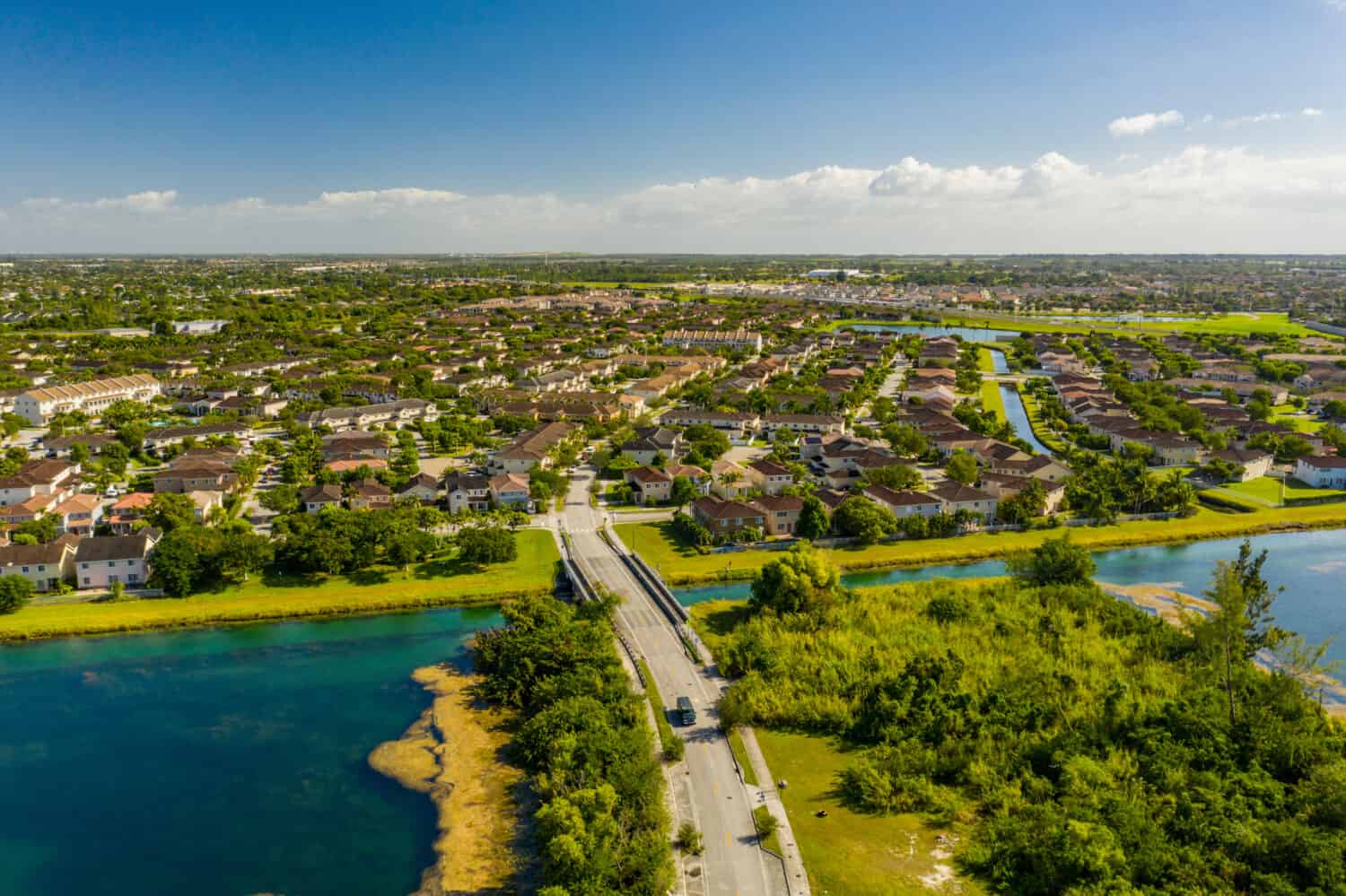
Homestead has high levels of violent and property crimes.
©Felix Mizioznikov/Shutterstock.com
Living in Homestead does come with a somewhat hefty price tag. The city stands out for its diverse population and harmonious blend of both younger and older generations.
However, this vibrant city is tarnished by its unfortunate distinction as one of the more dangerous places in Florida, with high levels of both violent and property crimes.
For individuals contemplating a relocation to Homestead, locals often recommend the northwest section of the city as a safer alternative.
A high poverty rate of 27.1% exacerbates the situation, suggesting that the financial struggle many residents face could be a significant contributing factor to the city’s crime rates.
Summary of Most Dangerous Places in Florida
| Place | Why It’s Dangerous |
|---|---|
| Miami | Severe weather |
| Key West | Severe weather |
| Melbourne | Severe weather |
| Tampa | Severe weather |
| Fort Myers | Severe weather |
| US-19 | Road accidents |
| US-41 | Road accidents |
| I-95 | Road accidents |
| Lake City | High crime rate |
| Riviera Beach | High crime rate |
| Cocoa | High crime rate |
| Lake Worth | High crime rate |
| Panama City | High crime rate |
| Lauderhill | High crime rate |
| Homestead | High crime rate |
The photo featured at the top of this post is © Frank Biganski/Shutterstock.com
Thank you for reading! Have some feedback for us? Contact the AZ Animals editorial team.







